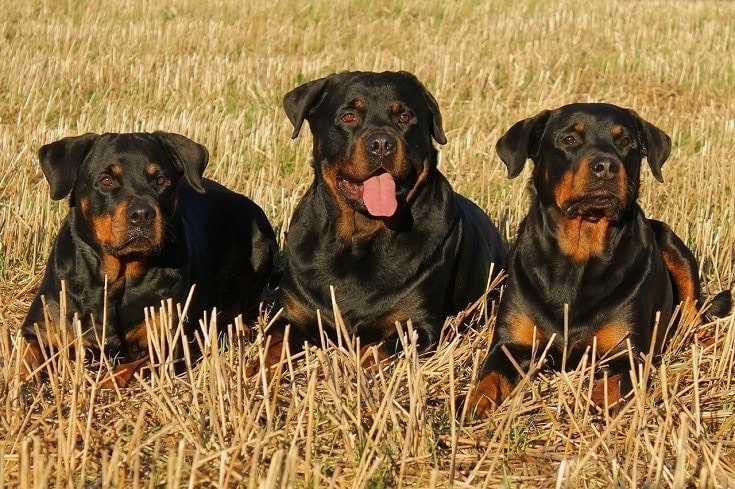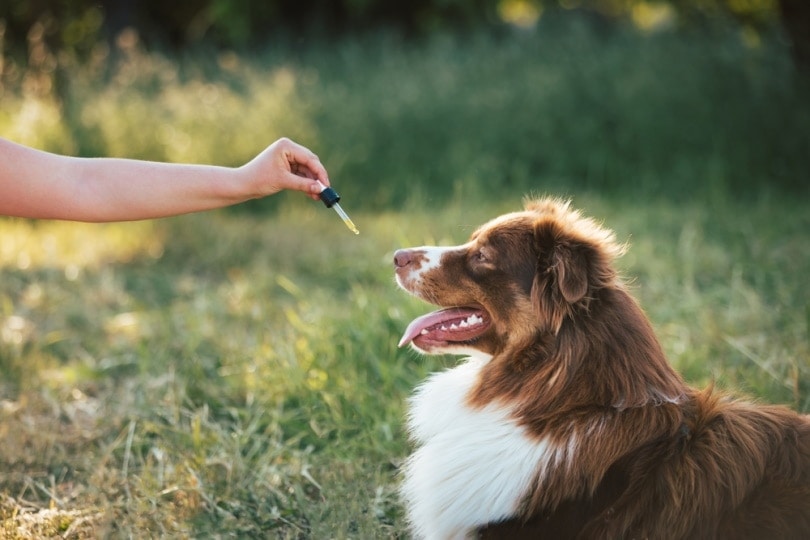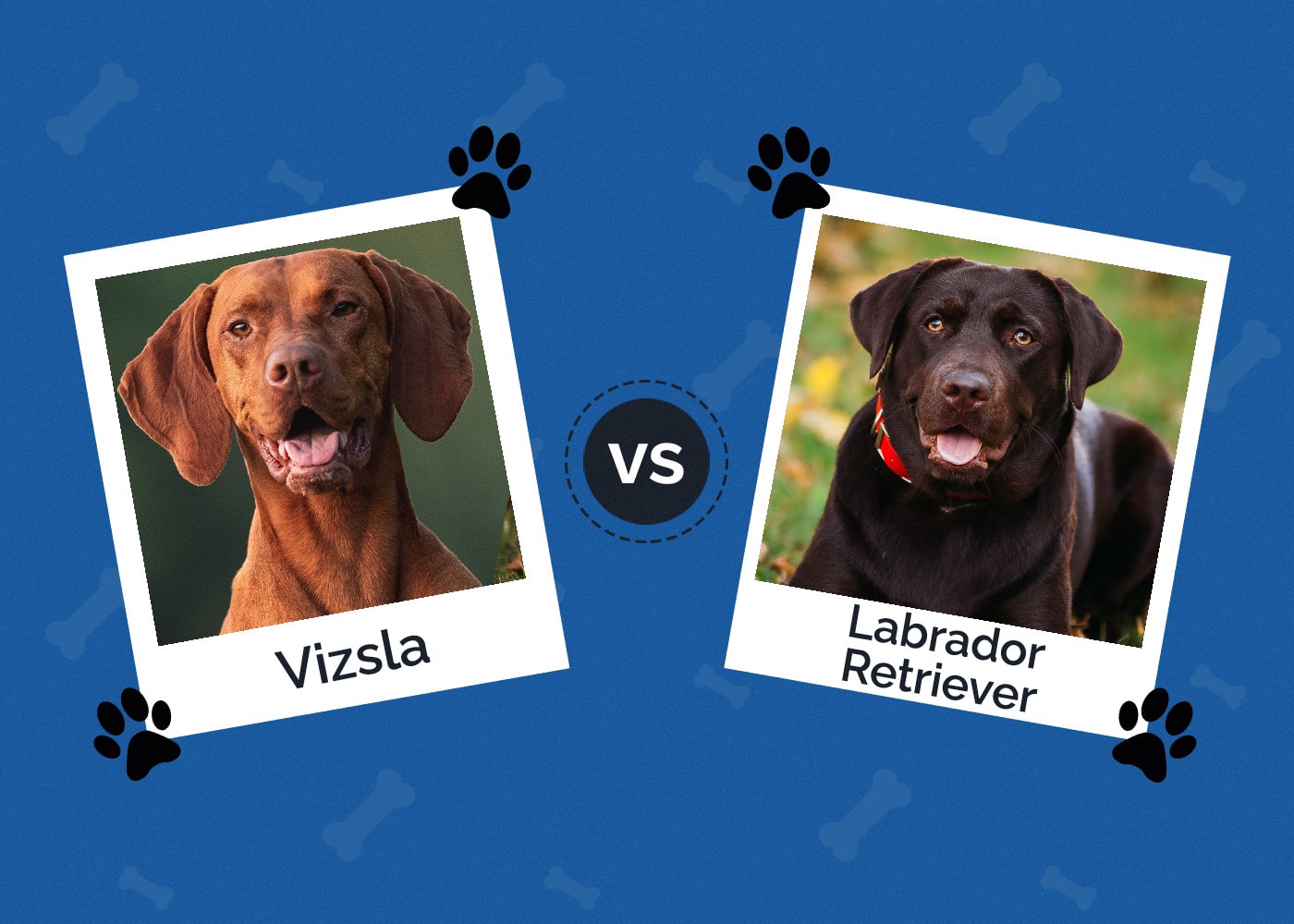Why Do Puppies Chew on Everything? 7 Vet Reviewed Reasons
Updated on
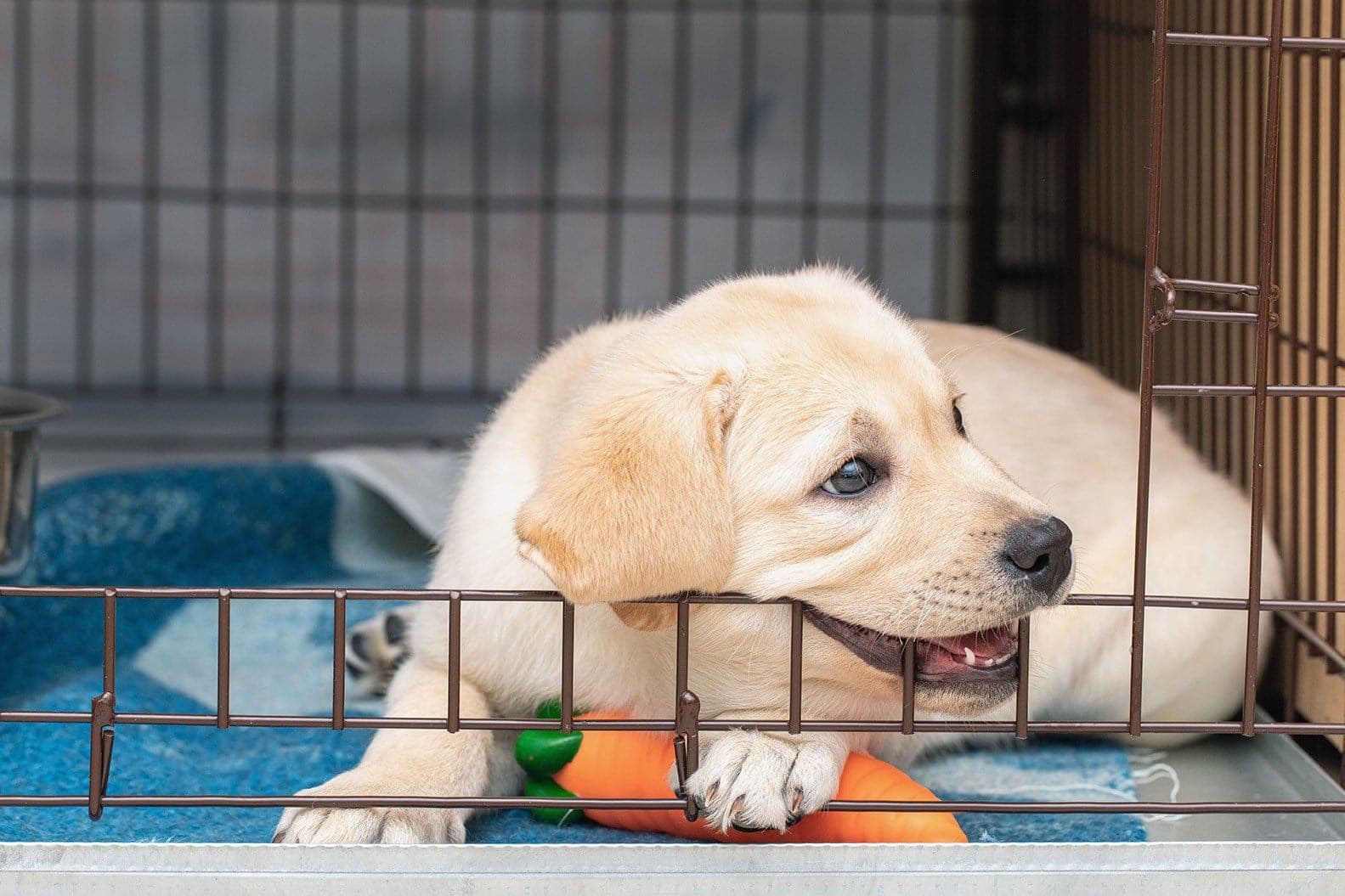
Click to Skip Ahead
Anyone who has ever had a puppy knows just how challenging these little monsters can be. Not only are they not born with housetraining and obedience skills, but puppies seem to constantly have something in their mouths. Whether it’s a toy, a piece of trash, or the leg of a chair, puppies love to chew. They don’t chew with the intent to be bad, though! It’s a normal dog behavior and there are multiple things that drive puppies to chew, so let’s talk about them.
The 7 Reasons Why Puppies Chew on Everything:
1. Teething
Like human babies, puppies aren’t born with their teeth. As they grow, their puppy teeth begin to come in, but by around 12 weeks of age, the puppy teeth will start to fall out. As puppy teeth come out, permanent adult teeth come in. As you might imagine, this process is incredibly uncomfortable.
One of the biggest reasons that puppies chew so much is because it helps to soothe the discomfort of the process of losing puppy teeth and adult ones coming. Since puppies may not be able to identify which objects will give them relief and which might make their teething pain worse, some puppies will indiscriminately chew on objects.
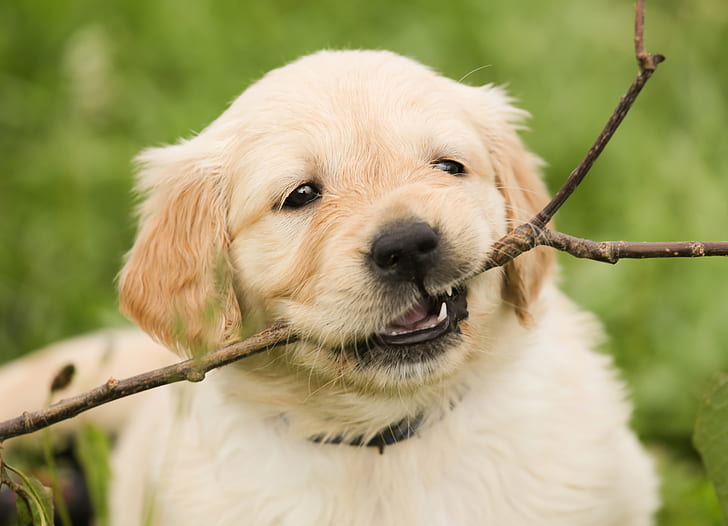
2. Learning and Exploration
Another similarity that puppies share with human babies is learning about the world around them by putting things into their mouths. Puppies will explore their environment by chewing on objects, allowing them to learn about tastes, textures, and even scents. This is a vital aspect of puppy growth and development, and as frustrating as it can be for puppy owners, it’s perfectly normal.
Although it’s normal and important, puppies can still be taught which objects are appropriate to chew on and which objects are not, but they don’t know this until you teach them! Helping puppies learn what they can chew on is essential to maintaining their safety.
3. Jaw Strengthening
When puppies are born, their mouths are designed to suckle since they survive off of their mother’s milk for the first few weeks of life. As their puppy teeth begin to come in and they start weaning from milk onto solid foods, the shape of a puppy’s mouth will begin to shift.
Since suckling and chewing require different functions within the mouth, a puppy’s jaw may not be well suited to chewing hard foods during the weaning period. As they are weaned and begin to chew, their jaw strength will increase. Chewing on objects and food can help to increase the strength of your puppy’s jaw.
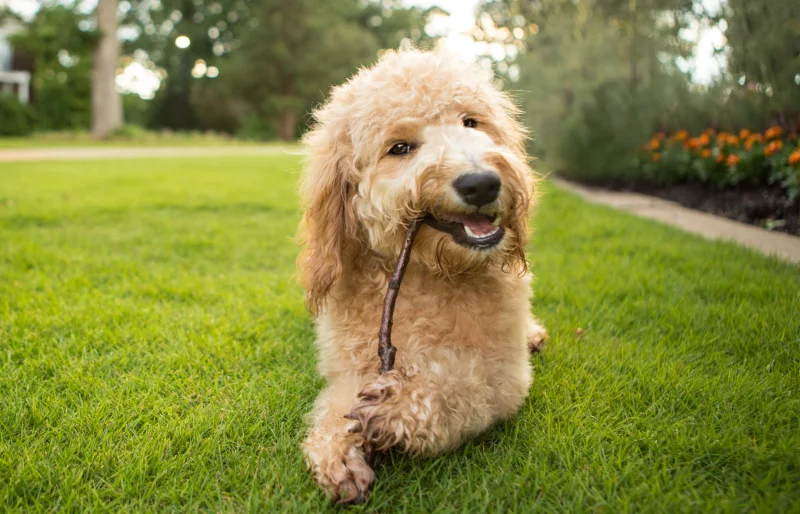
4. Stress
Like adult dogs, puppies can also become stressed by things in their environment and uncomfortable situations. Chewing can be an important tool to help relieve stress, but puppies may begin to exhibit inappropriate or destructive chewing behaviors when they become stressed.
Destructive stress chewing is far more likely to occur in older puppies that have already started to learn what they should and shouldn’t chew on. Very young puppies who are still learning to understand their environment may chew on objects, but it may be extremely difficult to discern if this behavior is related to stress or exploration and teething.
5. Separation Anxiety
Separation anxiety can occur in puppies and dogs of all ages, and it occurs in a wide range of severities. For young puppies, separation anxiety is often related to the process of learning how to spend time alone after living life with their mother and littermates. As dogs age, separation can be a highly complex issue that will require the assistance of professional behaviorists and veterinarians.
Dogs that suffer from separation anxiety can become extremely stressed and are often destructive, chewing on everything they can reach, including walls, doors, and the bars of their kennel. Separation anxiety can typically be managed, but it takes time and patience. As separation problems can develop for a number of reasons your vet or behaviorist will give tailored advice for your pup.
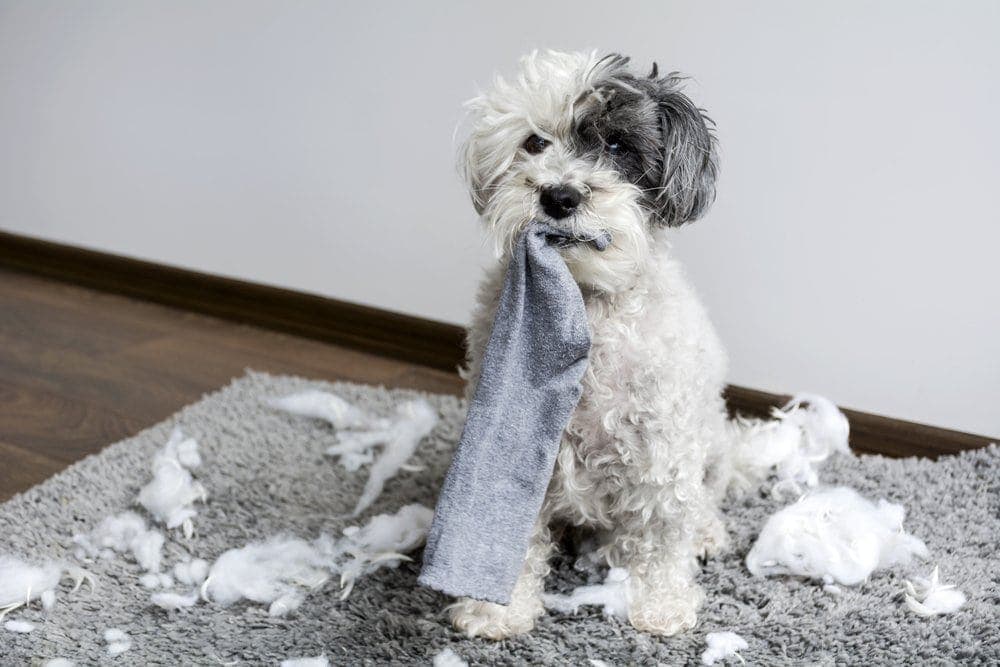
6. Boredom
Bored dogs are known to become destructive, and bored puppies are no different. When they’re bored, puppies usually will start to chew simply to fill the time.
To prevent boredom chewing, train your puppy about appropriate chewing objects, provide them with plenty of exercise, and find ways to entertain their brain, like puzzles and training sessions. These can all help to mitigate your puppy’s chewing boredom.
7. Habit
Puppies are impressionable and do best with a regular routine. Although good habits can be learned through routines, bad habits can also be allowed to set in. Some puppies may develop a chewing habit of inappropriate objects. For some puppies, this habit can entail them chewing on anything they can grab simply because they’ve developed the habit of chewing, while for other puppies, this habit may be chewing on a specific item. If allowed to take hold while your puppy is young, bad habits can be hard, but not impossible, to break. Never use punishment, positive, reward-based training methods are much more effective, and don’t damage the bond with your pup.
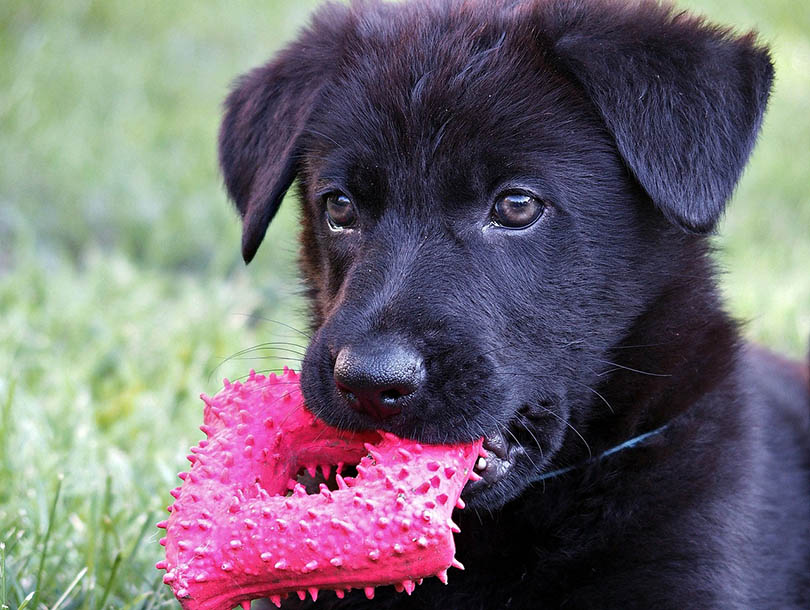
How to Prevent Chewing
Chewing is an important part of puppy development and is beneficial and calming for adult dogs, so you should never completely discourage your puppy from chewing. Provide your puppy with appropriate chew toys and provide them with high-value swaps, like appropriate toys or treats, when taking away something they’re chewing on.
One of the best commands you can teach your puppy is “drop it” and a close second is “leave it.” It’s inevitable that your pup will get something in their mouth at some point that doesn’t belong, and the “drop it” command can be used to quickly get objects out of your puppy’s mouth. “Leave it” is a great command for keeping your pup from picking up or chewing on interesting objects in the first place.
Dog-safe bitter sprays can be used to keep your puppy from chewing on inappropriate objects and are especially useful for things like electrical cords, furniture, and other solid objects. But while you’re training your puppy you may need to ‘puppy-proof’ your house and completely restrict access to certain areas.
Although learning what they should and shouldn’t chew on is important for your pup, it’s also important that you meet all their physical, mental, and emotional needs. Provide your puppy with a routine and an appropriate amount of exercise for their individual needs. Games, training sessions, food puzzles, and interactive toys you can play with together are all fantastic ways to keep your puppy from resorting to chewing on inappropriate objects.
Conclusion
It can be a real challenge to deal with the teething stage of puppyhood, but there’s a lot more to your pup’s chewing habits than just teething. Although it’s a normal behavior, sometimes your puppy may be trying to tell you something with their chewing, like that they’re bored or stressed. Work to create a routine that provides your pup with stability, as well as gentle training to help them learn what toys are appropriate for them to chew on.
Featured Image Credit: Olya Maximenko, Shutterstock




